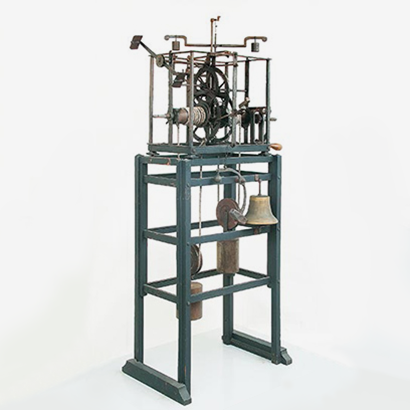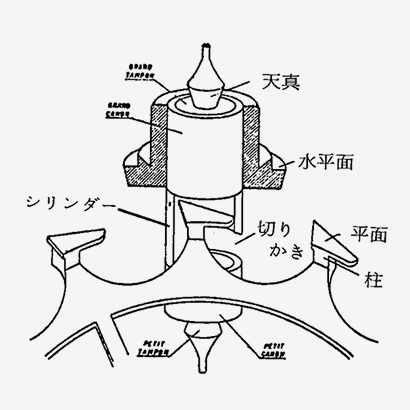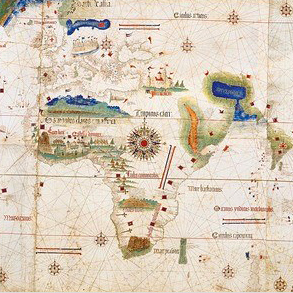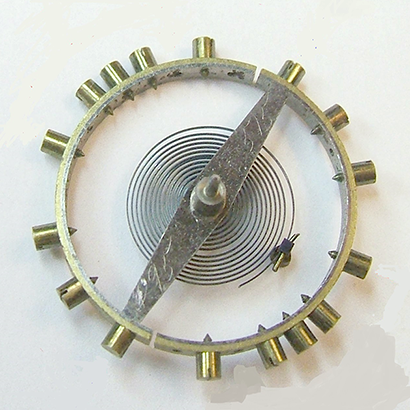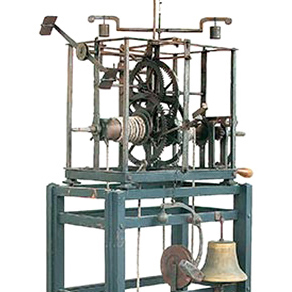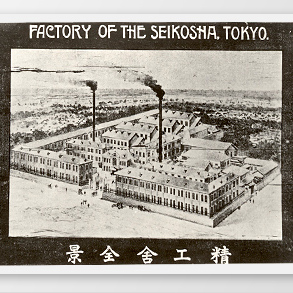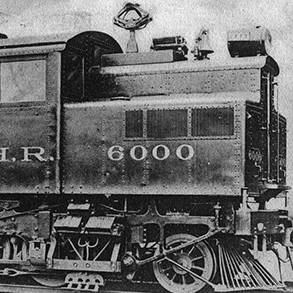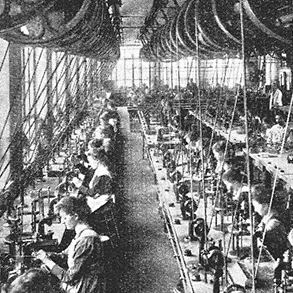Wristwatches first spread in the world after the World War I. The two World Wars produced basic technologies that evolved into watch technologies we still use today.
Emergence of the Wristwatch for War
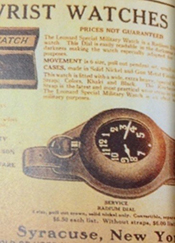
The pocket watch first came into use in around 1700. To tell the time, the watch owner had to pull the watch from a pocket and open the lid every time. This did not hinder adoption of the pocket watch for daily use by the royals, titled nobles, priests, and members of the upper classes.
Beginning from the early 19th century, noblewomen began to wear wristwatches fashioned like bejeweled bracelets as accessories. The oldest example is said to be the watch Emperor Napoleon ordered from Nitot, a Parisian watch jeweler, for Empress Josephine in 1806. These watches were inaccurate and fashioned with faces that were too small to clearly read. They failed to spread like the pocket watches that came before. Next, from the late 19th century and onwards, the development of new weapons and telephone/communication technologies modernized the ways of war. Watches played an important role on the battlefield as armies coordinated various strategies according to time. Soldiers kept careful track of time in engagements such as bombardments, doing all they could to deprive the enemy of any chance to attack. They kept their pocket watches deeply stowed under their trench coats, making it difficult to quickly extract them at times of need.
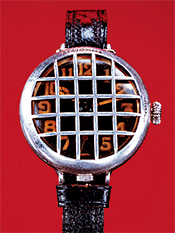
Modern warfare provided a great opportunity for the development of the wristwatch. According to records, Emperor Wilhelm I of Germany placed an order with Girard-Perregaux for 2,000 wristwatches for German naval officers in the 1880s. The watch he ordered, a pocket watch with a strap to wrap around the wrist and solid mesh metal cover over the dial, is said to have been the first mass-produced wristwatch. Strapping the watch on the wrist allowed a soldier to easily measure the timing of a bombardment. Unlike a pocket watch, which had to be held in one hand, the wristwatch freed both of the soldier’s hands for other uses. The Girard-Perregaux, however, was used solely for training and never in the battlefield.
Later, in the Second Boer War from 1899 to 1902, British soldiers became the first to actually wear wristwatches in the battlefield. Soldiers instantly recognized the convenience of wristwatches during the war.
The Spread of the Wristwatch in Armies in World War I
World War I (1914 to 1918), a global debacle involving dozens of countries, was a major trigger to the popularization of wristwatches. Radio technologies such as Morse code and voice signals were introduced for the issuance of war commands and transmissions in battlefields. Wristwatches were essential in managing the technologies and deploying strategies.
Hamilton began to produce military watches at the request of the US military. The US Army is said to have been the first organization to issue military watches as standard hardware, in 1912.
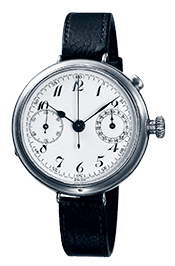
By 1915, Breitling had already developed the world’s first chronograph wristwatch. The watch was equipped with a separate pushing button exclusively for stopwatch timing. It could time for up to only 30 minutes, the limit set for pilots flying on limited fuel.
Watches developed for war determined the functions and designs of later wristwatches and gradually became popular among civilians after World War I.
The soldiers who wore wristwatches for the first time on the battlefield continued using their wristwatches when they returned to civilian life. This eased the resistance to wristwatches and gradually expanded the market.
From the Age of the Pocket Watch to the Age of the Wristwatch
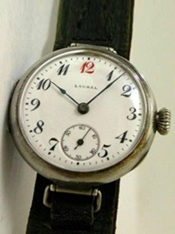
Seiko released Japan’s first wristwatch, the “Laurel,” in 1913. Seikosha was Japan’s only manufacturer capable of mass-producing pocket watches at the time. Successful in continuing to sell them, the company managed to release Japan’s first Laurel wristwatch, by sharing the same movement and exterior of the small Laurel pocket watch.
Only some of Japan’s military men of the day were familiar with the wristwatch. Even so, Kintaro Hattori, the founder of Seiko, went ahead and developed wristwatches in the expectation that the age of the wristwatch would come to Japan in the near future. Later, after overcoming difficulties brought by the Great Kanto Earthquake of 1923, Seiko planned out the full-scale mass production of wristwatches from 1924 onward.
Outside of Japan, Rolex developed the world’s first water-proof and dust-proof wristwatch, the “Oyster,” in 1926. The airtight design prevented moisture and dust from infiltrating the case. This advance decreased the failure rates and stabilized the precision of wristwatches, which in turn fed demand.
In 1910, Rolex became the first manufacturer to receive the official chronometer certificate for wristwatches, granted by the Swiss Official Chronometer Federation . Wristwatches were more vulnerable to shock than pocket watches, as they remained strapped to the more ambulatory wrist. They were also widely looked down upon for being poor in accuracy and durability. The “Oyster” helped to break the prejudice.
Development of the Self-Winding Wristwatch
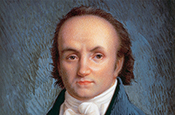
The development of wristwatches cannot be discussed without mentioning the self-winding wristwatch, a timepiece that automatically wound the mainspring when strapped to the wrist.
In 1777, Abraham-Louis Perrelet from Switzerland invented the world’s first self-winding mechanism for springs by attaching a vibrating body fixed to the central axis of a pocket watch mainspring. A few years later, in 1780, Abraham-Louis Breguet invented more reliable self-winding mechanism that used a pendulum. Due to the characteristics of the pocket watch, the convenience of his invention went unnoticed. Popularity eluded it for many decades.
Later, in 1924, as wristwatches gradually became familiar to the public, the Englishman John Harwood acquired a patent for his invention of a revolutionary self-winding mechanism that used a semi-rotational rotor to wind the mainspring. By using it in 1926, the Swiss watchmaker Fortis released the world’s first self-winding wristwatch.
In 1931, Rolex developed the famous “Perpetual,” a watch incorporating the first iteration of the modern self-winding mechanism with a rotor that rotates 360 degrees. Next came the “Oyster Perpetual,” a water-proof self-winding watch with an original water-resistant mechanism. These timepieces were the first mass-produced self-winding watches to become widely popular.
The “Seiko Sportsmatic 5” released by Seiko in 1963 greatly promoted the popularization of self-winding watches, as well.
To the Age of the Wristwatch as Standard Personal Accessory
In 1927, Charles Lindbergh used a Longines wristwatch to measure his flight time from New York to Paris on his successful solo Atlantic Ocean flight. The watch became popular.
In 1931, Jaeger -LeCoultre released the “Reverso,” a wristwatch with a reversible body to protect the watch face from impact during polo sport. Rolex also released the “Prince,” a wristwatch with an Art Deco design. These innovative designs and exteriors became a popular topic.
Wristwatches were thus recognized as both practical instruments and as accessories to display on the wrist for fashion or as shows of status.
By the 1930’s, the production of wristwatches exceeded that of pocket watches both in Japan and worldwide. By the middle of the decade, the wristwatch had completely supplanted the pocket watch as the mainstream.
The unit price for wristwatches gradually fell with the standardization of parts, the introduction of smaller-sized wristwatches for women, and mass production of wristwatches. Wristwatches thus became popular outside of the military and upper-class society.
Development of Military Watches for World War II
A steady succession of technically improved watches with special features were released during World War II. Oris, for example, made a watch with a large crown for the US Army Air Forces. Soldiers flying at altitudes as high as 30,000 feet could adjust the time zone on the watch without removing their thick leather gloves.
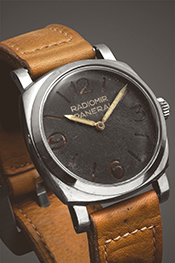
In 1940, Panerai released the “Radiomir,” a diver’s watch coated with a fluorescent material, developed at the request of the Italian Navy. The case and lugs were made from steel of the same mass to ensure excellent durability under water. In 1942, Breitling developed the “Chronomat,” a watch equipped with a circular slide rule for the calculation of average velocity, fuel consumption, etc. Watches with excellent water resistance, air tightness, and other convenient functions were produced for use under severe pressures during flight and under water.
Establishment of Wristwatches after the War
Soon after war, in 1945, Rolex released “DateJust,” a feature that automatically changed the date every night at 0 AM. In 1953, the company introduced the “Submariner,” a diver’s watch with a professional rotating bezel and water resistance at a depth of up to 100 m.
After the war, various companies developed and released a steady succession of convenient and practical wristwatch features for everyday use. Wristwatches became part of daily life for everyone.
Function-wide, wristwatches had made great progress during World War II. Once the war ended, watchmakers developed a host of new wristwatches for professional and casual use, such as fashionable sport watches, chronographs for motor sports, diver’s watches for marine sports, and thin or rectangular dress watches for formal wear.
As we have seen, wristwatches were developed out of necessity: soldiers on the battlefield needed them to more easily and conveniently check the time. Watches continued to evolve through the war, gaining in durability against elements such as dust, water, or pressure and acquiring basic practical functions such as self-winding, date display, fluorescence, chronograph, etc. The wristwatch surpassed the pocket watch both as an essential tool for everyday use and as a status-enhancing accessory.
Watches with higher added values such as high precision, water resistance for scuba diving, multifunctional chronograph functions, complex calendars, etc. and ornate, jewelry-like decorations came later, mainly after the 1960’s.
References
・“Kessaku Udedokei Hyakunen Zukan (Illustrated Reference Book of 100 Years of Masterpiece in Wristwatches)” Sekai-Bunka-Sha
・“Military Watch Encyclopedia” Kesaharu Imai


